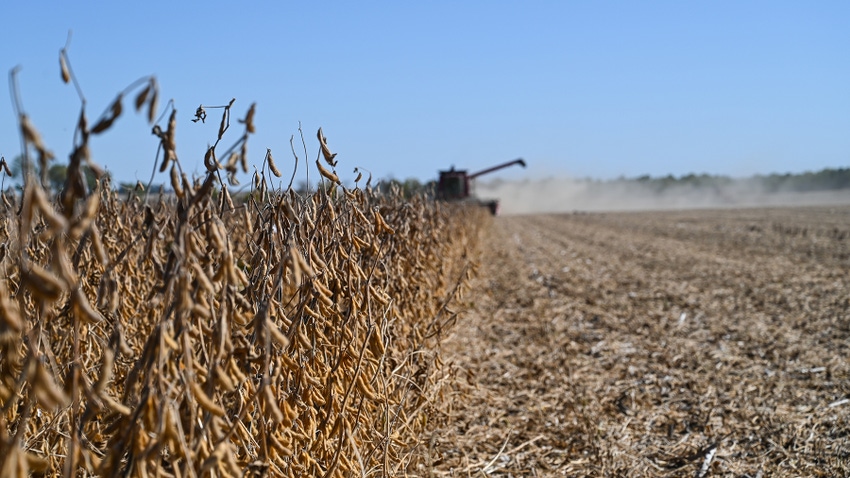
USDA’s new World Agricultural Supply and Demand Estimates (WASDE) report, which the agency released on Thursday morning, helped soybean prices move back into the green after the agency reported lower-than-expected yield and production estimates. Prices shifted more than 3% higher in the hour following the report. That was enough to kickstart a rally for corn and wheat prices, too. Corn prices firmed more than 1% in late-morning trading, with wheat contracts tracking 0.5% to 2% higher over the same period.
USDA slightly docked corn and soybean production potential this month, with corn estimates holding just north of 15 billion bushels, while soybean production stayed just above 4.1 billion bushels. Per-acre yield estimates for both crops also trended lower this month.
Corn
USDA’s latest corn outlook noted “reduced supplies, lower feed and residual use and exports, and smaller ending stocks.” Corn production forecasts faded 70 million bushels lower to a new total of 15.064 billion bushels, which the agency primarily attributes to a cut in yield from 173.8 bushels per acre in September down to 173.0 bpa.
USDA also trimmed its export forecast by 25 million bushels, “reflecting smaller supplies and slow early-season demand.” Feed and residual use also dropped 25 million bushels due to lower supply. All told, that left ending stocks down 110 million bushels.
The season-average farm price trended a nickel higher, to $4.95 per bushel.
A look overseas shows that global coarse grain production shifted fractionally lower this month, with decreases to foreign barley production slightly offsetting increases to foreign corn production, which saw improvements in Argentina, Moldova, the European Union and Paraguay.
In South America, USDA held 2023/24 corn production estimates steady for both Argentina and Brazil. That leaves Argentina’s potential currently at 2.165 billion bushels, while Brazil is expected to harvest as much as 5.079 billion bushels this season.
Soybeans
USDA docked its soybean production estimates by 42 million bushels to 4.104 billion bushels, due to lower per-acre yields. The agency’s new yield estimates are modestly below September’s mark of 50.1 bpa, sliding to 49.6 bpa in October. USDA also noted that the largest production changes this past month occurred in Kansas, Michigan and Nebraska.
Soybean export estimates fell 35 million bushels to 1.76 billion, which is primarily due to competition from South America. Soybean crushings improved 10 million to 2.3 billion bushels based on firm demand for soymeal exports and domestic soyoil use. Ending stocks remain unchanged, at a historically tight 220 million bushels.
The season-average farm price also held steady this month, at $12.90 per bushel.
Globally, 2023/24 soybean exports are expected to reach 6.180 billion bushels, with a decrease in U.S. exports partly offset by an uptick in Brazilian sales. Also of note overseas is India’s soybean crop. Production potential there fell more than 8% lower after near-record rains in December led to some crop damage.
South America’s 2023/24 production potential held steady from last month. In Argentina, farmers could capture a crop totaling 1.764 billion bushels, while Brazilian farmers are hoping for another record-breaking production of 5.989 billion bushels.
Wheat
U.S. wheat supplies moved 85 million bushels higher, which is a reflection of recent data from the NASS Small Grains Annual Survey that was published at the end of September. Exports remain stable at 700 million bushels after several class changes offset each other. Ending stocks increased 55 million bushels to 670 million bushels, which is a year-over-year increase of 15%.
The season-average farm price spilled 20 cents lower to $7.30 per bushel, which USDA says is due to “higher projected stocks and expectations for futures and cash prices for the remainder of the marketing year.”
USDA’s global outlook for wheat assumes “reduced supplies, lower consumption, decreased trade and lower stocks.” Of particular note, 2023/24 ending stocks declined to 9.484 billion bushels, which is the lowest volume since 2015/16.
Click here to access the full September WASDE report.
Read more about:
WASDEAbout the Author(s)
You May Also Like






